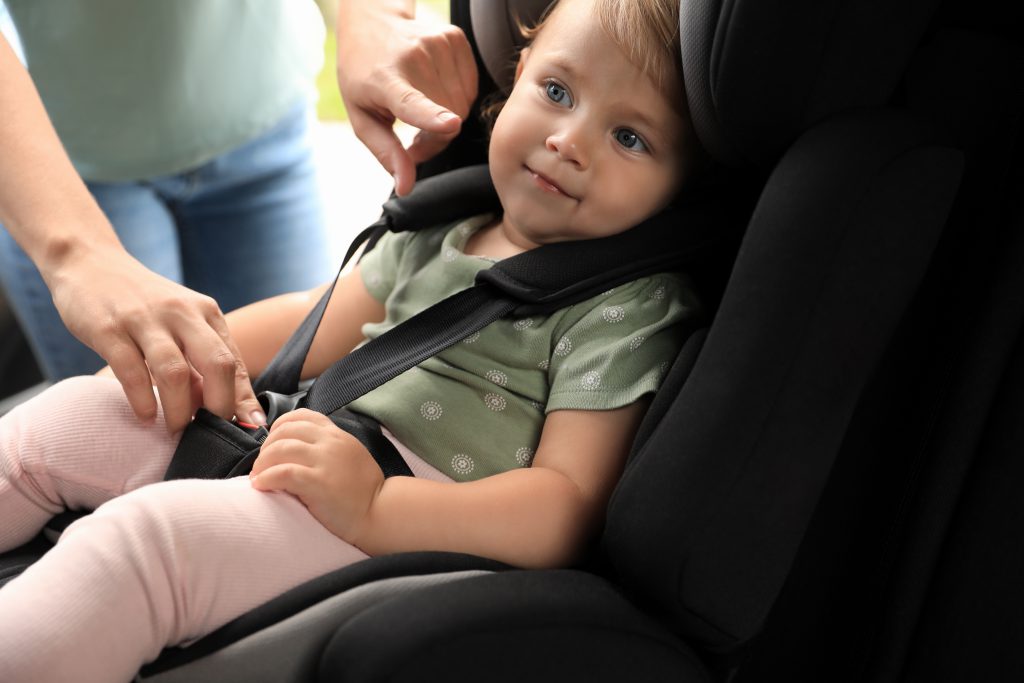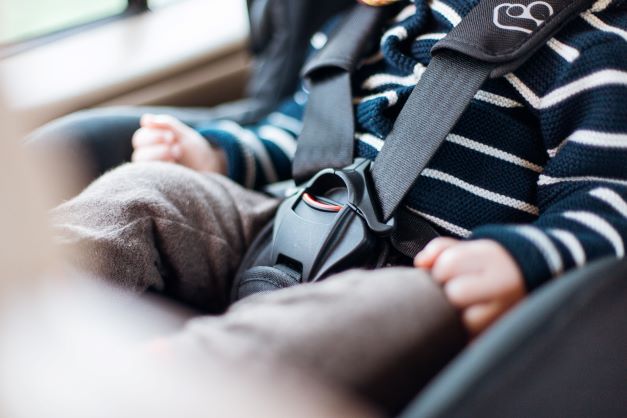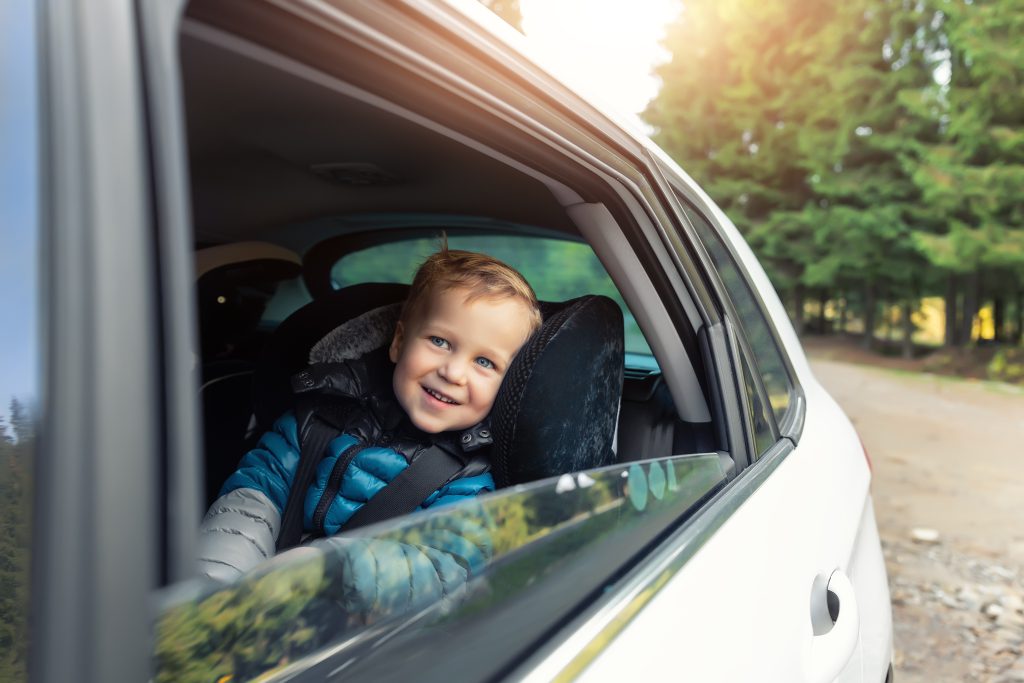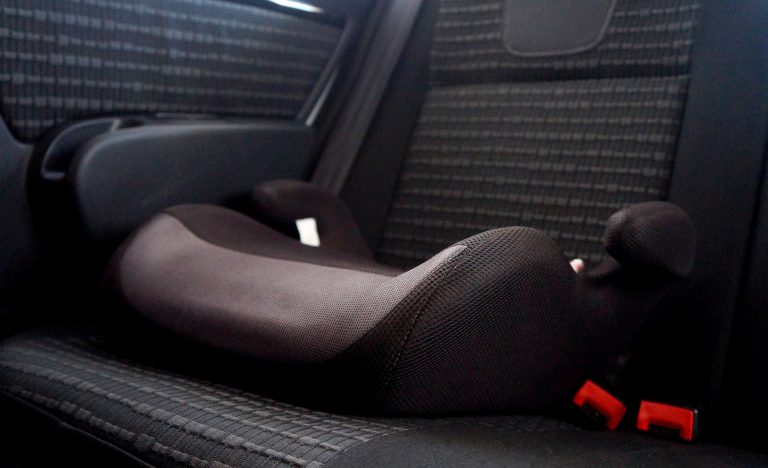Every driver and passenger should wear a seat belt when driving in a car, according to UK car seat laws. However, children under a certain age are also legally required to be restrained in a child car seat. This is a safety precaution to reduce the risk of serious injury or even death if the car is involved in a collision.
Research has found that rear-facing car seats can reduce the likelihood of death or serious injury to babies or small children by 90%. This shows how important it is to ensure the child you are driving is properly secured in a car seat appropriate for their weight and height.
There are various conditions to consider when finding the right car seat for your child, so we’ve compiled a list of rules on children’s car seats. We’ll also look at the car and booster seat law in the UK when it comes to private hire vehicles and unexpected journeys to explain whether your child can be driven without a child car seat.
It’s a good idea to consult the provided weight guide so that you can ensure you are equipped with the right seat for your child. You will also have to change the car seats as your child grows so that they are properly protected.
- Why are there booster seat requirements?
- What are the different types of car seats for children?
- Is there a “booster seat age” limit and are there any regulations?
- What are the booster seat requirements in terms of weight?
- FAQs
- Summary
Why are there booster seat requirements?

Booster seat requirements are in place to protect children in case they are involved in a car accident. Unrestrained passengers will continue travelling at the same speed that the vehicle was travelling at until they hit something. This means that a child can be ejected from the car at a speed of between 30-60mph if they are involved in a collision and not properly restrained.
Backless booster seats can also raise a child to a suitable height to use an adult seatbelt. This means that the belt can rest upon the strong chest and pelvis bones, rather than the vulnerable stomach and neck. Backless booster seats are popular for this reason.
What is the penalty if a child doesn’t sit in the correct child car seat or follow car seat requirements?
It is the driver’s responsibility to ensure that a child under 12 years is wearing a seatbelt, sits in an appropriate child car seat and adheres to car seat guidelines. The driver is also responsible for ensuring that a seatbelt is worn by children that are aged 12 to 13 years old, or younger than 13 and taller than 135cm. Anyone aged over 14 years old is responsible for wearing their own seatbelt.
Drivers could be hit with a fine of up to £500 if they drive without supplying a car seat when legally required. Police officers are able to issue a penalty on the spot after pulling over a driver, or the driver may be taken to court.
What are the different types of car seats for children?
There are different types of child car seats that are legally approved in the UK, including:
- Rearward-facing baby seat
- Combination seat (rearward and forward-facing)
- high-backed booster seats
- booster cushion
- backless booster seat
The seat that you use for your child will depend on their age and weight.
If your child has a medical condition that means that they can’t use a car seat or seat belt then a doctor can issue an exemption on medical grounds. Parents can also buy specially adapted booster seats.
Is there a “booster seat age” limit and are there any regulations?
The booster seat age limit in the UK applies to children 12 years old and younger. This limit is irrelevant though if the child is taller than 135cm (4’4″). As the parent or guardian, it is up to you to choose the right car seat based on your child’s weight and height.
Babies that are aged under 15 months old must be placed in a height-based seat known as an i-Size. The child car seat must be a rear-facing seat until they are 15 months old, after which time they can use a forward-facing seat. It’s essential that the seat you use is the correct height for your child so that they are properly protected.
You must deactivate the car’s front airbags before you fit a rear-facing car seat. This is because the force of the airbags deploying could seriously injure a child. You can not fit child seats in side-facing seats as they won’t be properly protected.
What are the booster seat requirements in terms of weight?

The seat that you choose for your child should be based on their weight and ability to comfortably sit and be restrained. All child car seats that are used in the UK must be EU-approved. They will have a label that contains a circled capital E and the code ‘ECE R44’.
The following is the government’s list of the different types of seats that are suitable for each weight band. Your child may fall into more than one category as the weight bands overlap, so it’s up to you to decide which style of car seat you want to use.
| Weight | Group | Seat style |
| 0kg to 10kg | 0 | Lie-flat or ‘lateral’ baby carrier, rear-facing baby carrier, or rear-facing baby seat using a harness |
| 0kg to 13kg | 0+ | Rear-facing baby carrier or rear-facing baby seat using a harness |
| 9kg to 18kg | 1 | Rear- or forward-facing baby seat using a harness or safety shield |
| 15kg to 25kg | 2 | Rear- or forward-facing child car seat (high-backed booster seat or booster cushion) using a seat belt, harness or safety shield |
| 22kg to 36kg | 3 | Rear- or forward-facing child car seat (high-backed booster seat or booster cushion) using a seat belt, harness or safety shield |
Regulations have changed, which means that booster cushions can only be manufactured for approval as group 3. This does not affect existing booster cushions approved for group 2; you can continue using them for your child.
FAQs
Do children with disabilities or medical conditions need to use car seats?
You must still abide by the car seat age and weight restrictions for children that have disabilities or medical needs. However, the child can also use a disabled person’s seatbelt or child restraint, depending on their needs.
Your child’s doctor may be able to issue you with a certificate that exempts your child from using a normal seat belt or restraint because of their condition. This certificate must be kept in the vehicle when the child is a passenger and shown to the police if you are stopped.
Is a child car seat compulsory when travelling in taxis, minicabs and Uber?
Privately hired vehicles such as Uber cars, taxis and minicabs may not have a car seat for your child to use as the driver isn’t legally required to provide one. In this instance, your child can travel without using a car seat, but only if they travel in the rear of the vehicle. They must also wear an adult seat belt if they are aged three years or older. They can travel without a seat belt if they are under the age of three.
Minibuses and coaches don’t have to provide car seats either. You must make sure that you have an appropriate child car seat if you want to ensure that your child can use one. The same rules apply to vans as they do to cars.
Children can travel in coaches without using a car seat if one isn’t provided. Children must travel in the rear of minibuses if car seats are not provided. Children aged three years or older must use car seats if provided, but they can use an adult seat belt if the vehicle doesn’t have child car seats or they are not suitable. Children under the age of three do not need to wear an adult seat belt, but they must still travel in the vehicle’s rear seat.
Do children need car seats for unexpected but necessary journeys?
Children aged three years or older can be a passenger in a vehicle without a car seat if the journey is unexpected, necessary, and a short distance. Children under the age of three cannot make a journey without the correct car seat unless they are in a licensed taxi or minicab and the child is travelling in a rear seat without a seat belt.
How should I fit child car seats?
It’s important that you follow the manufacturer’s instructions when installing the seat into your car so that it is secure and comfortable for the child.
Child seats can only be used if your car has a diagonal seatbelt. However, you can use a car seat if it is designed to be used with a lap belt, or if it can be fitted using ISOFIX anchor points.
If there’s no room for a third car seat in the back of a vehicle, the third child seat should be installed on the passenger seat in the front of the car.
Why can’t children use adult seat belts?
Children’s bodies are different from adults and therefore need different protection to keep them safe in potential crashes. Babies have different proportions to adults because their heads are larger and their limbs are smaller. All these factors make small children, infants, and babies more vulnerable than adults in a car accident.
Child car seats are specifically designed to protect children and babies in the areas where they are most vulnerable. These areas change as they grow, which is why it’s important that you provide the correct child car seat for your child’s weight, height, and age.
Restraint systems such as car seats and adult seat belts are designed so that they reduce momentum in a controlled way during a crash and distribute the force of the crash to the stronger areas of the body. This minimises damage to soft tissues and internal organs.
Summary

It is essential that you adhere to car seat laws and use the correct child car seats in your vehicle so that your babies or children are protected in case of a collision. Adult seat belts are not designed to support children in the correct areas, which could cause them more damage. You need to buy the correct child car seat based on the weight and height of your child. There are various categories for each weight, which will determine whether your child needs a rear-facing or forward-facing car seat.
Older children may be able to use a child seat or booster cushion to raise them to a height that enables them to use an adult seat belt properly. Children with disabilities or medical conditions may be able to use a disabled person’s seatbelt or child restraint if their condition allows it. They may also be excused from using a seat belt, but only if a doctor has authorised it and issued them with an official certificate.
Children don’t have to use a child seat if they are being taken on an unexpected but necessary journey. They also don’t have to use a child car seat if they are using a taxi, coach or minibus that does not offer a booster or car child seat.

